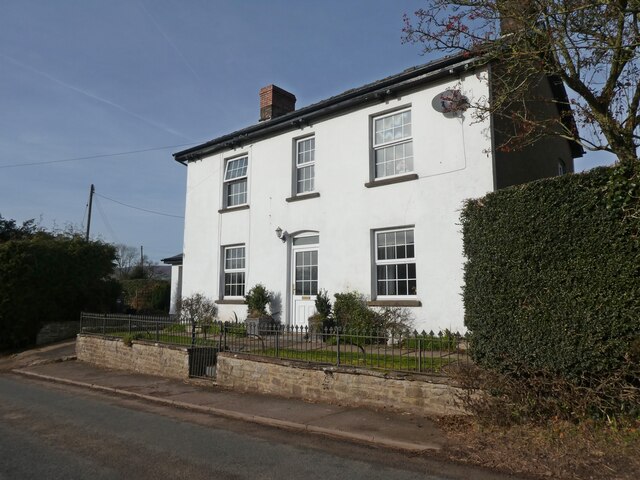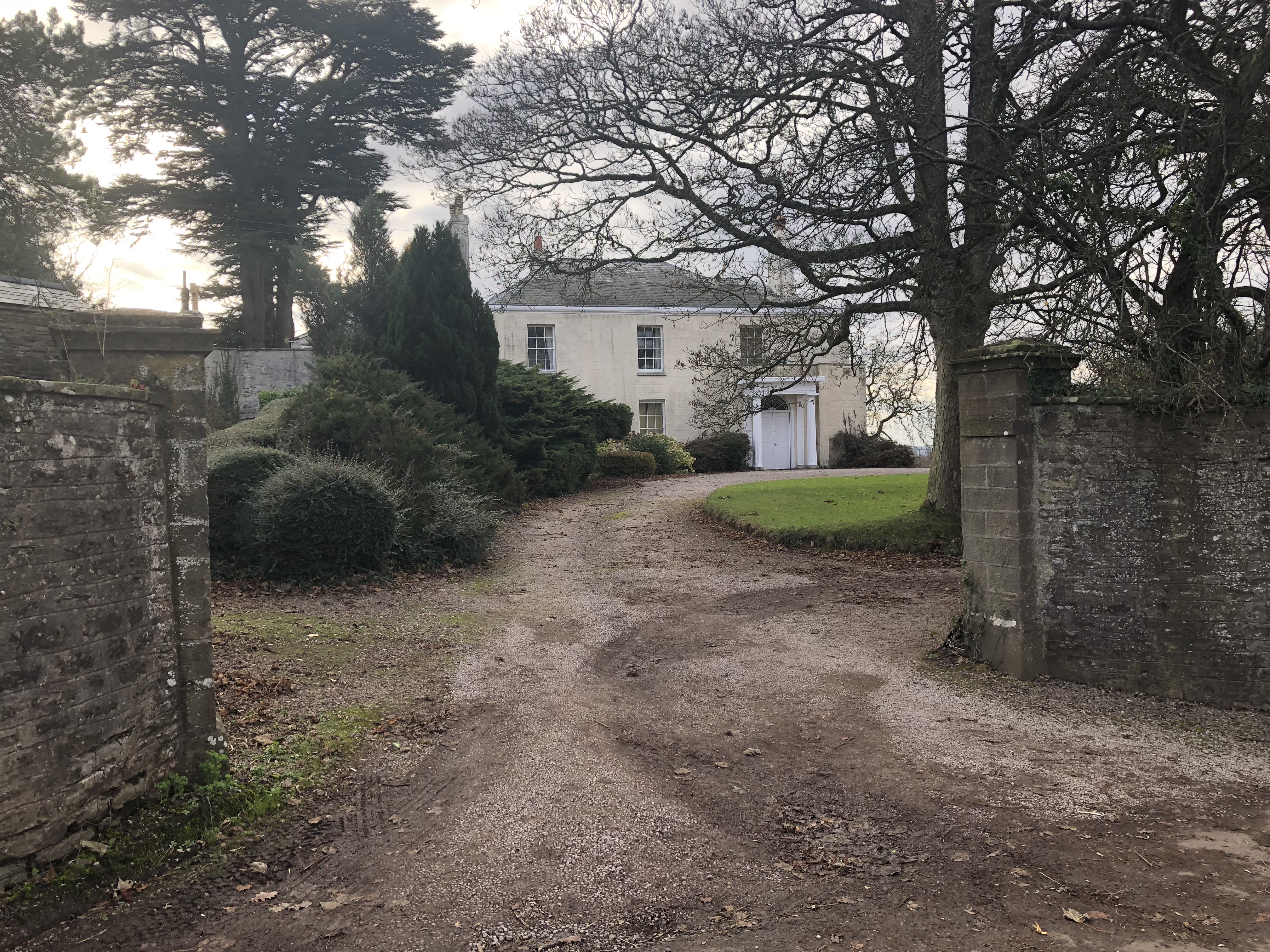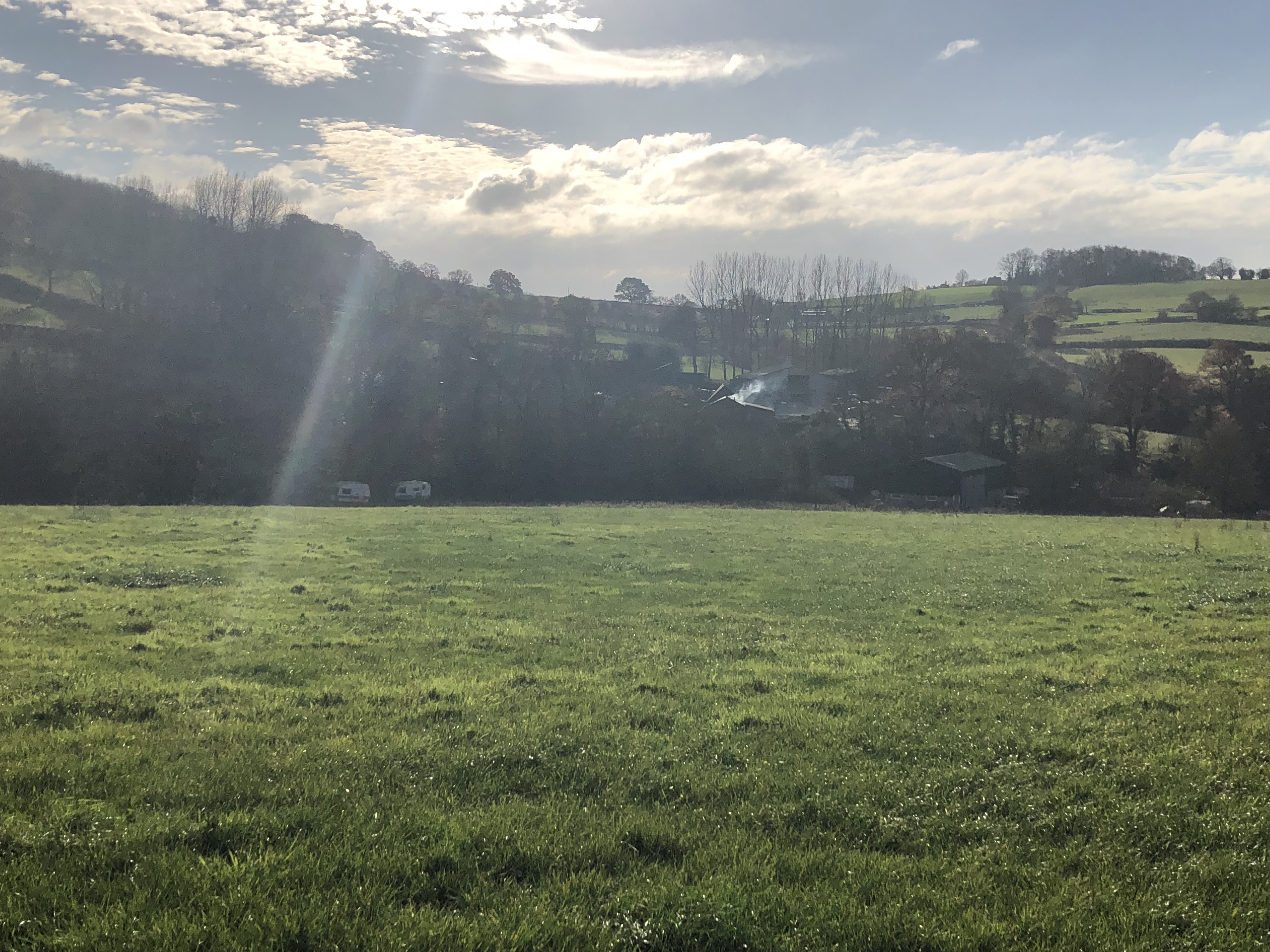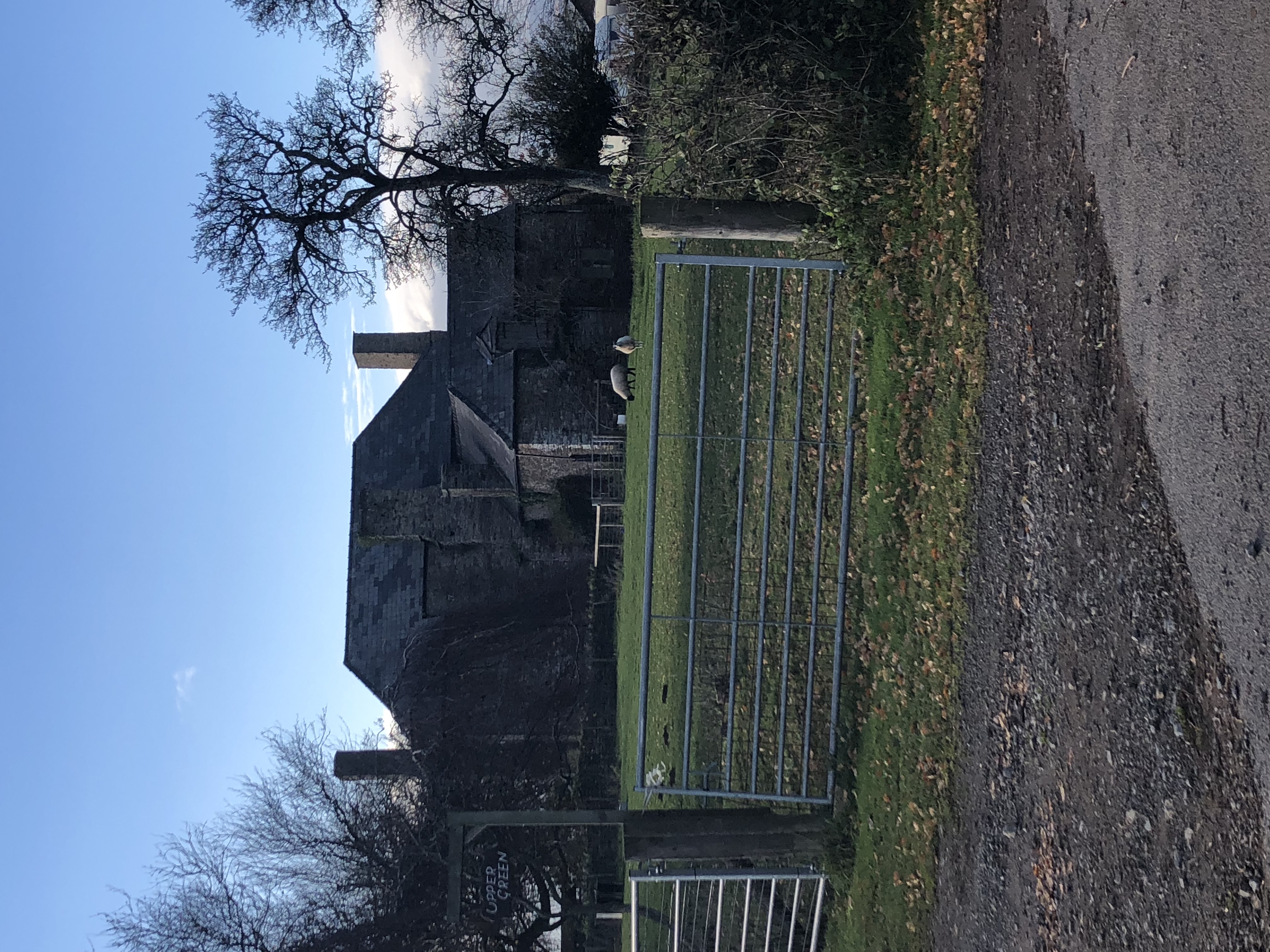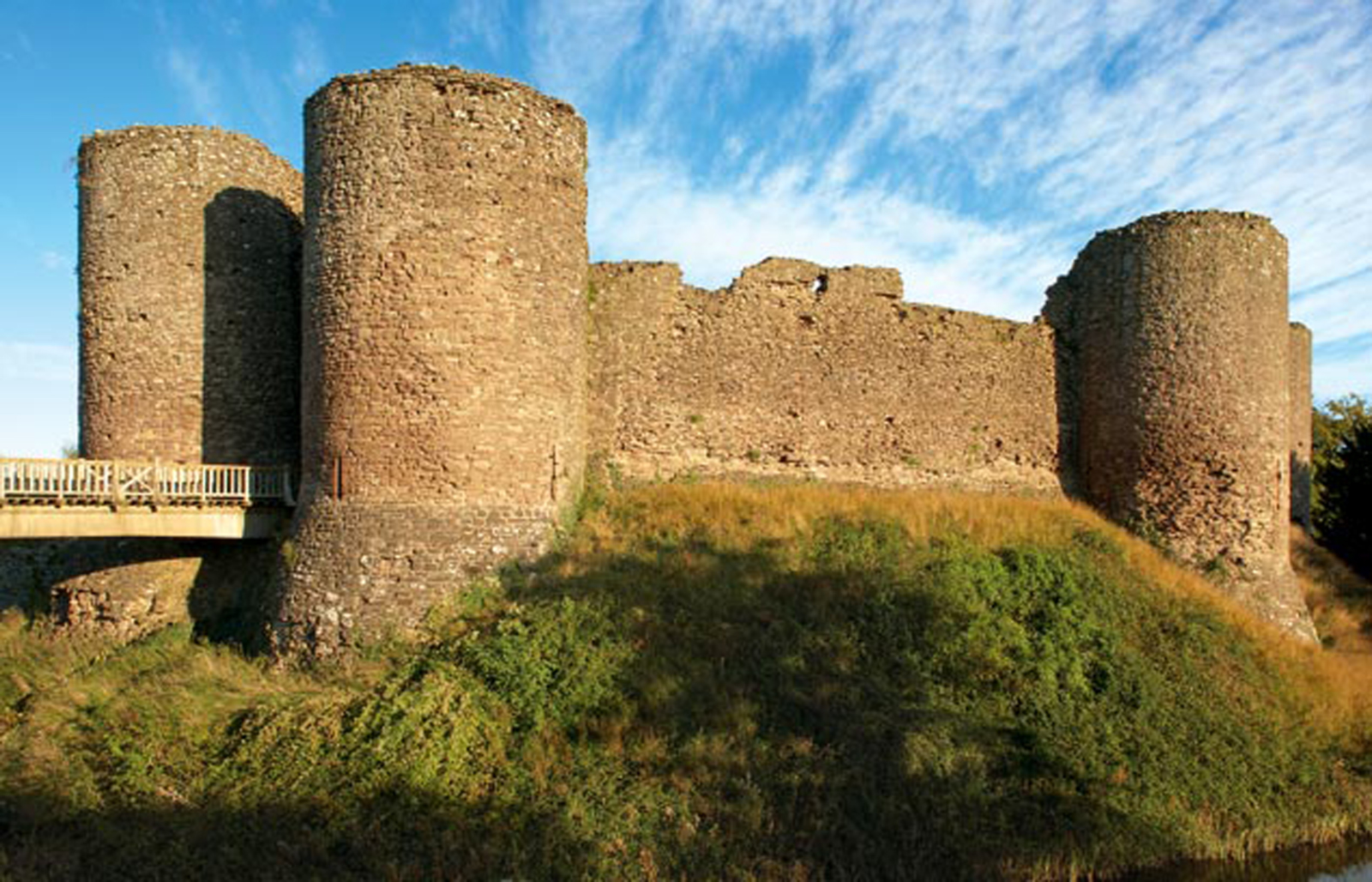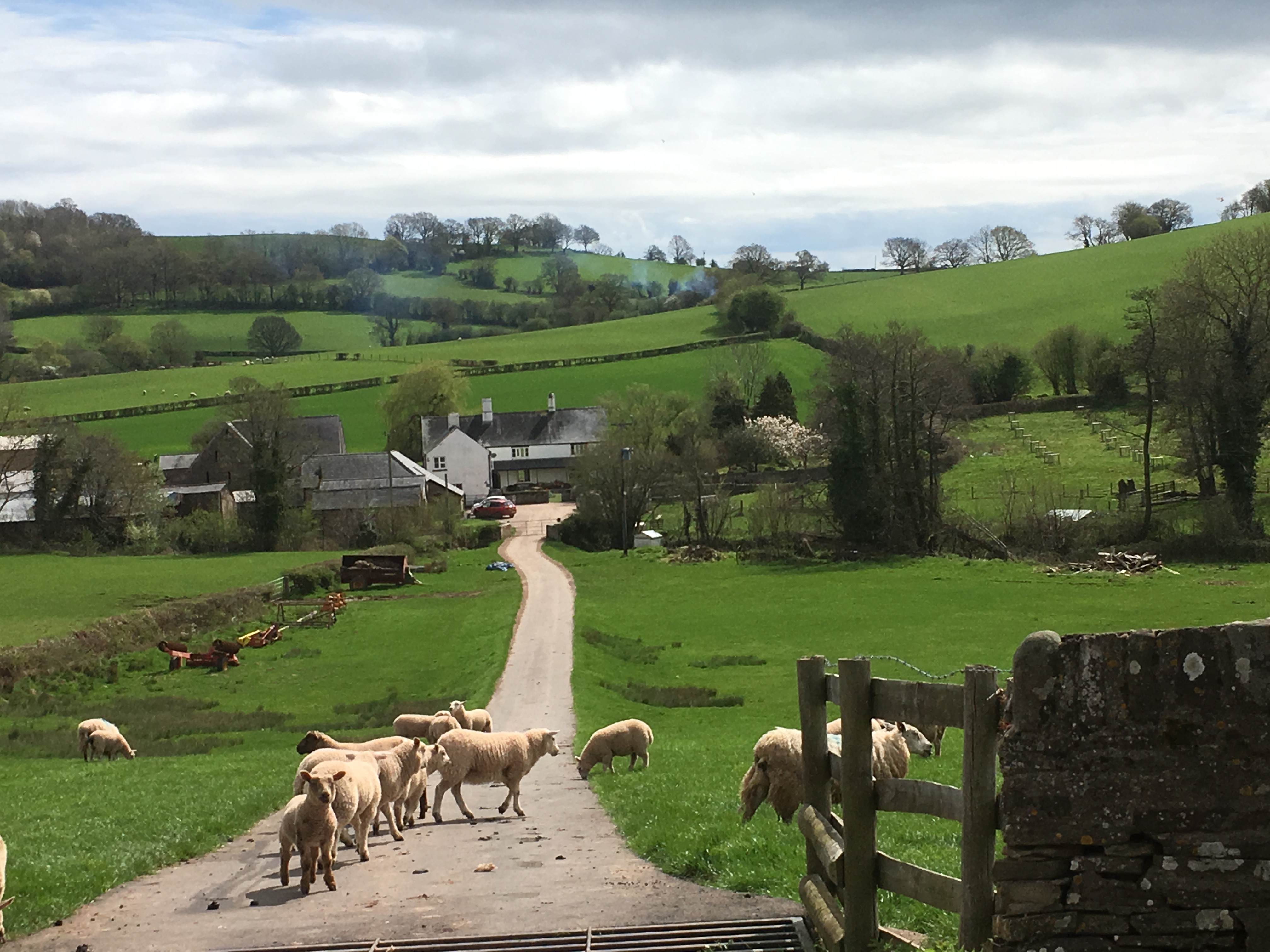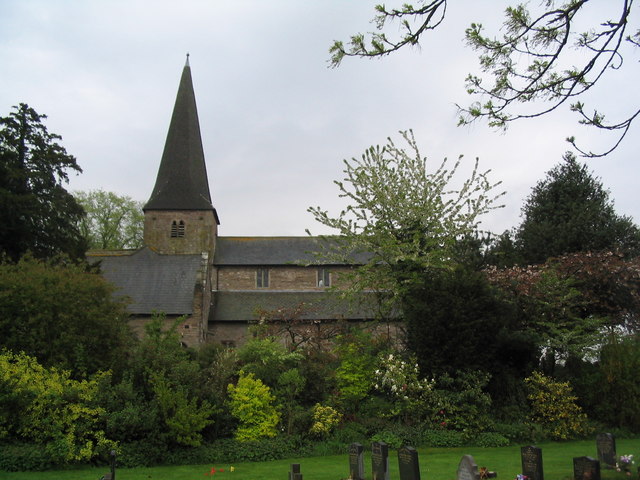Bryn Deri
Hill, Mountain in Monmouthshire
Wales
Bryn Deri
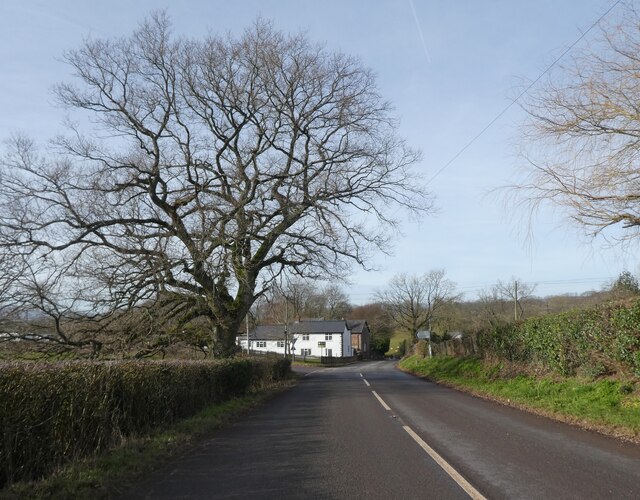
Bryn Deri is a prominent hill located in Monmouthshire, Wales. Situated near the town of Abergavenny, it offers breathtaking panoramic views of the surrounding countryside. With an elevation of approximately 1,100 feet (335 meters), Bryn Deri is not considered a mountain but rather a prominent hill within the region.
The hill is a popular destination for outdoor enthusiasts, hikers, and nature lovers due to its diverse landscape and natural beauty. It features a mix of open grasslands, dense woodlands, and rocky outcrops, providing a variety of habitats for flora and fauna. Visitors can expect to encounter a range of wildlife, including birds, small mammals, and occasional sightings of larger animals such as deer.
Several well-marked trails traverse Bryn Deri, catering to both casual walkers and more experienced hikers. The paths lead through wooded areas with bluebells and wildflowers during the spring, offering a picturesque setting. As visitors ascend the hill, they are rewarded with stunning views of the Usk Valley and the Brecon Beacons National Park in the distance.
Bryn Deri holds historical significance as well, with remnants of an Iron Age hillfort situated near its summit. This archaeological site provides a glimpse into the area's ancient past and adds an additional layer of interest for those exploring the hill.
Overall, Bryn Deri in Monmouthshire is a captivating natural landmark that offers a delightful blend of scenic beauty, recreational opportunities, and cultural heritage.
If you have any feedback on the listing, please let us know in the comments section below.
Bryn Deri Images
Images are sourced within 2km of 51.851383/-2.8753863 or Grid Reference SO3917. Thanks to Geograph Open Source API. All images are credited.
![White Castle [1] An information board about White Castle being one of three.
White Castle (Welsh: Castell Gwyn), also known historically as Llantilio Castle, is sited near the village of Llantilio Crossenny in Monmouthshire. The first castle, of earth and timber, was probably built soon after the Norman conquest. The castle was rebuilt in stone in the early 13th century with curtain walls, mural towers and a gatehouse. In the mid 13th century the large outer ward was enclosed with a curtain wall and its own gatehouse. The castle never saw action, became disused and was in ruins by the early 17th century. The ruins are of red sandstone rubble stone, with ashlar dressings. The remains are in the care of Cadw and are listed, grade I, with details at: <span class="nowrap"><a title="https://cadwpublic-api.azurewebsites.net/reports/listedbuilding/FullReport?lang=&amp;id=" rel="nofollow ugc noopener" href="https://cadwpublic-api.azurewebsites.net/reports/listedbuilding/FullReport?lang=&amp;id=">Link</a><img style="margin-left:2px;" alt="External link" title="External link - shift click to open in new window" src="https://s1.geograph.org.uk/img/external.png" width="10" height="10"/></span> 2079 The site is a Scheduled Ancient Monument with details at: <span class="nowrap"><a title="https://cadwpublic-api.azurewebsites.net/reports/sam/FullReport?lang=&amp;id=" rel="nofollow ugc noopener" href="https://cadwpublic-api.azurewebsites.net/reports/sam/FullReport?lang=&amp;id=">Link</a><img style="margin-left:2px;" alt="External link" title="External link - shift click to open in new window" src="https://s1.geograph.org.uk/img/external.png" width="10" height="10"/></span> 2957](https://s2.geograph.org.uk/geophotos/07/56/21/7562146_9a8f2e7c.jpg)
![White Castle [2] The remains of the gatehouse leading into the outer ward.
White Castle (Welsh: Castell Gwyn), also known historically as Llantilio Castle, is sited near the village of Llantilio Crossenny in Monmouthshire. The first castle, of earth and timber, was probably built soon after the Norman conquest. The castle was rebuilt in stone in the early 13th century with curtain walls, mural towers and a gatehouse. In the mid 13th century the large outer ward was enclosed with a curtain wall and its own gatehouse. The castle never saw action, became disused and was in ruins by the early 17th century. The ruins are of red sandstone rubble stone, with ashlar dressings. The remains are in the care of Cadw and are listed, grade I, with details at: <span class="nowrap"><a title="https://cadwpublic-api.azurewebsites.net/reports/listedbuilding/FullReport?lang=&amp;id=" rel="nofollow ugc noopener" href="https://cadwpublic-api.azurewebsites.net/reports/listedbuilding/FullReport?lang=&amp;id=">Link</a><img style="margin-left:2px;" alt="External link" title="External link - shift click to open in new window" src="https://s1.geograph.org.uk/img/external.png" width="10" height="10"/></span> 2079 The site is a Scheduled Ancient Monument with details at: <span class="nowrap"><a title="https://cadwpublic-api.azurewebsites.net/reports/sam/FullReport?lang=&amp;id=" rel="nofollow ugc noopener" href="https://cadwpublic-api.azurewebsites.net/reports/sam/FullReport?lang=&amp;id=">Link</a><img style="margin-left:2px;" alt="External link" title="External link - shift click to open in new window" src="https://s1.geograph.org.uk/img/external.png" width="10" height="10"/></span> 2957](https://s0.geograph.org.uk/geophotos/07/56/21/7562148_74752bd1.jpg)
![White Castle [3] An information board about the development of the castle.
White Castle (Welsh: Castell Gwyn), also known historically as Llantilio Castle, is sited near the village of Llantilio Crossenny in Monmouthshire. The first castle, of earth and timber, was probably built soon after the Norman conquest. The castle was rebuilt in stone in the early 13th century with curtain walls, mural towers and a gatehouse. In the mid 13th century the large outer ward was enclosed with a curtain wall and its own gatehouse. The castle never saw action, became disused and was in ruins by the early 17th century. The ruins are of red sandstone rubble stone, with ashlar dressings. The remains are in the care of Cadw and are listed, grade I, with details at: <span class="nowrap"><a title="https://cadwpublic-api.azurewebsites.net/reports/listedbuilding/FullReport?lang=&amp;id=" rel="nofollow ugc noopener" href="https://cadwpublic-api.azurewebsites.net/reports/listedbuilding/FullReport?lang=&amp;id=">Link</a><img style="margin-left:2px;" alt="External link" title="External link - shift click to open in new window" src="https://s1.geograph.org.uk/img/external.png" width="10" height="10"/></span> 2079 The site is a Scheduled Ancient Monument with details at: <span class="nowrap"><a title="https://cadwpublic-api.azurewebsites.net/reports/sam/FullReport?lang=&amp;id=" rel="nofollow ugc noopener" href="https://cadwpublic-api.azurewebsites.net/reports/sam/FullReport?lang=&amp;id=">Link</a><img style="margin-left:2px;" alt="External link" title="External link - shift click to open in new window" src="https://s1.geograph.org.uk/img/external.png" width="10" height="10"/></span> 2957](https://s2.geograph.org.uk/geophotos/07/56/21/7562150_f54dbe53.jpg)
![White Castle [4] The inner ward seen from the outer ward. The remains of the outer gatehouse are on the left.
White Castle (Welsh: Castell Gwyn), also known historically as Llantilio Castle, is sited near the village of Llantilio Crossenny in Monmouthshire. The first castle, of earth and timber, was probably built soon after the Norman conquest. The castle was rebuilt in stone in the early 13th century with curtain walls, mural towers and a gatehouse. In the mid 13th century the large outer ward was enclosed with a curtain wall and its own gatehouse. The castle never saw action, became disused and was in ruins by the early 17th century. The ruins are of red sandstone rubble stone, with ashlar dressings. The remains are in the care of Cadw and are listed, grade I, with details at: <span class="nowrap"><a title="https://cadwpublic-api.azurewebsites.net/reports/listedbuilding/FullReport?lang=&amp;id=" rel="nofollow ugc noopener" href="https://cadwpublic-api.azurewebsites.net/reports/listedbuilding/FullReport?lang=&amp;id=">Link</a><img style="margin-left:2px;" alt="External link" title="External link - shift click to open in new window" src="https://s1.geograph.org.uk/img/external.png" width="10" height="10"/></span> 2079 The site is a Scheduled Ancient Monument with details at: <span class="nowrap"><a title="https://cadwpublic-api.azurewebsites.net/reports/sam/FullReport?lang=&amp;id=" rel="nofollow ugc noopener" href="https://cadwpublic-api.azurewebsites.net/reports/sam/FullReport?lang=&amp;id=">Link</a><img style="margin-left:2px;" alt="External link" title="External link - shift click to open in new window" src="https://s1.geograph.org.uk/img/external.png" width="10" height="10"/></span> 2957](https://s0.geograph.org.uk/geophotos/07/56/21/7562152_499ce364.jpg)
![White Castle [5] The curtain wall around the outer ward.
White Castle (Welsh: Castell Gwyn), also known historically as Llantilio Castle, is sited near the village of Llantilio Crossenny in Monmouthshire. The first castle, of earth and timber, was probably built soon after the Norman conquest. The castle was rebuilt in stone in the early 13th century with curtain walls, mural towers and a gatehouse. In the mid 13th century the large outer ward was enclosed with a curtain wall and its own gatehouse. The castle never saw action, became disused and was in ruins by the early 17th century. The ruins are of red sandstone rubble stone, with ashlar dressings. The remains are in the care of Cadw and are listed, grade I, with details at: <span class="nowrap"><a title="https://cadwpublic-api.azurewebsites.net/reports/listedbuilding/FullReport?lang=&amp;id=" rel="nofollow ugc noopener" href="https://cadwpublic-api.azurewebsites.net/reports/listedbuilding/FullReport?lang=&amp;id=">Link</a><img style="margin-left:2px;" alt="External link" title="External link - shift click to open in new window" src="https://s1.geograph.org.uk/img/external.png" width="10" height="10"/></span> 2079 The site is a Scheduled Ancient Monument with details at: <span class="nowrap"><a title="https://cadwpublic-api.azurewebsites.net/reports/sam/FullReport?lang=&amp;id=" rel="nofollow ugc noopener" href="https://cadwpublic-api.azurewebsites.net/reports/sam/FullReport?lang=&amp;id=">Link</a><img style="margin-left:2px;" alt="External link" title="External link - shift click to open in new window" src="https://s1.geograph.org.uk/img/external.png" width="10" height="10"/></span> 2957](https://s2.geograph.org.uk/geophotos/07/56/21/7562154_3e4510b5.jpg)
![White Castle [6] The inner ward seen from the outer ward.
White Castle (Welsh: Castell Gwyn), also known historically as Llantilio Castle, is sited near the village of Llantilio Crossenny in Monmouthshire. The first castle, of earth and timber, was probably built soon after the Norman conquest. The castle was rebuilt in stone in the early 13th century with curtain walls, mural towers and a gatehouse. In the mid 13th century the large outer ward was enclosed with a curtain wall and its own gatehouse. The castle never saw action, became disused and was in ruins by the early 17th century. The ruins are of red sandstone rubble stone, with ashlar dressings. The remains are in the care of Cadw and are listed, grade I, with details at: <span class="nowrap"><a title="https://cadwpublic-api.azurewebsites.net/reports/listedbuilding/FullReport?lang=&amp;id=" rel="nofollow ugc noopener" href="https://cadwpublic-api.azurewebsites.net/reports/listedbuilding/FullReport?lang=&amp;id=">Link</a><img style="margin-left:2px;" alt="External link" title="External link - shift click to open in new window" src="https://s1.geograph.org.uk/img/external.png" width="10" height="10"/></span> 2079 The site is a Scheduled Ancient Monument with details at: <span class="nowrap"><a title="https://cadwpublic-api.azurewebsites.net/reports/sam/FullReport?lang=&amp;id=" rel="nofollow ugc noopener" href="https://cadwpublic-api.azurewebsites.net/reports/sam/FullReport?lang=&amp;id=">Link</a><img style="margin-left:2px;" alt="External link" title="External link - shift click to open in new window" src="https://s1.geograph.org.uk/img/external.png" width="10" height="10"/></span> 2957](https://s0.geograph.org.uk/geophotos/07/56/21/7562156_6378861d.jpg)
![White Castle [7] The moat surrounds the inner ward.
White Castle (Welsh: Castell Gwyn), also known historically as Llantilio Castle, is sited near the village of Llantilio Crossenny in Monmouthshire. The first castle, of earth and timber, was probably built soon after the Norman conquest. The castle was rebuilt in stone in the early 13th century with curtain walls, mural towers and a gatehouse. In the mid 13th century the large outer ward was enclosed with a curtain wall and its own gatehouse. The castle never saw action, became disused and was in ruins by the early 17th century. The ruins are of red sandstone rubble stone, with ashlar dressings. The remains are in the care of Cadw and are listed, grade I, with details at: <span class="nowrap"><a title="https://cadwpublic-api.azurewebsites.net/reports/listedbuilding/FullReport?lang=&amp;id=" rel="nofollow ugc noopener" href="https://cadwpublic-api.azurewebsites.net/reports/listedbuilding/FullReport?lang=&amp;id=">Link</a><img style="margin-left:2px;" alt="External link" title="External link - shift click to open in new window" src="https://s1.geograph.org.uk/img/external.png" width="10" height="10"/></span> 2079 The site is a Scheduled Ancient Monument with details at: <span class="nowrap"><a title="https://cadwpublic-api.azurewebsites.net/reports/sam/FullReport?lang=&amp;id=" rel="nofollow ugc noopener" href="https://cadwpublic-api.azurewebsites.net/reports/sam/FullReport?lang=&amp;id=">Link</a><img style="margin-left:2px;" alt="External link" title="External link - shift click to open in new window" src="https://s1.geograph.org.uk/img/external.png" width="10" height="10"/></span> 2957](https://s3.geograph.org.uk/geophotos/07/56/21/7562159_26bc1f11.jpg)
![White Castle [8] The moat surrounds the inner ward. Seen from the bridge.
White Castle (Welsh: Castell Gwyn), also known historically as Llantilio Castle, is sited near the village of Llantilio Crossenny in Monmouthshire. The first castle, of earth and timber, was probably built soon after the Norman conquest. The castle was rebuilt in stone in the early 13th century with curtain walls, mural towers and a gatehouse. In the mid 13th century the large outer ward was enclosed with a curtain wall and its own gatehouse. The castle never saw action, became disused and was in ruins by the early 17th century. The ruins are of red sandstone rubble stone, with ashlar dressings. The remains are in the care of Cadw and are listed, grade I, with details at: <span class="nowrap"><a title="https://cadwpublic-api.azurewebsites.net/reports/listedbuilding/FullReport?lang=&amp;id=" rel="nofollow ugc noopener" href="https://cadwpublic-api.azurewebsites.net/reports/listedbuilding/FullReport?lang=&amp;id=">Link</a><img style="margin-left:2px;" alt="External link" title="External link - shift click to open in new window" src="https://s1.geograph.org.uk/img/external.png" width="10" height="10"/></span> 2079 The site is a Scheduled Ancient Monument with details at: <span class="nowrap"><a title="https://cadwpublic-api.azurewebsites.net/reports/sam/FullReport?lang=&amp;id=" rel="nofollow ugc noopener" href="https://cadwpublic-api.azurewebsites.net/reports/sam/FullReport?lang=&amp;id=">Link</a><img style="margin-left:2px;" alt="External link" title="External link - shift click to open in new window" src="https://s1.geograph.org.uk/img/external.png" width="10" height="10"/></span> 2957](https://s1.geograph.org.uk/geophotos/07/56/21/7562161_bb85416b.jpg)
![White Castle [9] Looking across the bridge over the moat to the gatehouse.
White Castle (Welsh: Castell Gwyn), also known historically as Llantilio Castle, is sited near the village of Llantilio Crossenny in Monmouthshire. The first castle, of earth and timber, was probably built soon after the Norman conquest. The castle was rebuilt in stone in the early 13th century with curtain walls, mural towers and a gatehouse. In the mid 13th century the large outer ward was enclosed with a curtain wall and its own gatehouse. The castle never saw action, became disused and was in ruins by the early 17th century. The ruins are of red sandstone rubble stone, with ashlar dressings. The remains are in the care of Cadw and are listed, grade I, with details at: <span class="nowrap"><a title="https://cadwpublic-api.azurewebsites.net/reports/listedbuilding/FullReport?lang=&amp;id=" rel="nofollow ugc noopener" href="https://cadwpublic-api.azurewebsites.net/reports/listedbuilding/FullReport?lang=&amp;id=">Link</a><img style="margin-left:2px;" alt="External link" title="External link - shift click to open in new window" src="https://s1.geograph.org.uk/img/external.png" width="10" height="10"/></span> 2079 The site is a Scheduled Ancient Monument with details at: <span class="nowrap"><a title="https://cadwpublic-api.azurewebsites.net/reports/sam/FullReport?lang=&amp;id=" rel="nofollow ugc noopener" href="https://cadwpublic-api.azurewebsites.net/reports/sam/FullReport?lang=&amp;id=">Link</a><img style="margin-left:2px;" alt="External link" title="External link - shift click to open in new window" src="https://s1.geograph.org.uk/img/external.png" width="10" height="10"/></span> 2957](https://s1.geograph.org.uk/geophotos/07/56/21/7562165_6ead7b9d.jpg)
![White Castle [10] An information board about the gatehouse.
White Castle (Welsh: Castell Gwyn), also known historically as Llantilio Castle, is sited near the village of Llantilio Crossenny in Monmouthshire. The first castle, of earth and timber, was probably built soon after the Norman conquest. The castle was rebuilt in stone in the early 13th century with curtain walls, mural towers and a gatehouse. In the mid 13th century the large outer ward was enclosed with a curtain wall and its own gatehouse. The castle never saw action, became disused and was in ruins by the early 17th century. The ruins are of red sandstone rubble stone, with ashlar dressings. The remains are in the care of Cadw and are listed, grade I, with details at: <span class="nowrap"><a title="https://cadwpublic-api.azurewebsites.net/reports/listedbuilding/FullReport?lang=&amp;id=" rel="nofollow ugc noopener" href="https://cadwpublic-api.azurewebsites.net/reports/listedbuilding/FullReport?lang=&amp;id=">Link</a><img style="margin-left:2px;" alt="External link" title="External link - shift click to open in new window" src="https://s1.geograph.org.uk/img/external.png" width="10" height="10"/></span> 2079 The site is a Scheduled Ancient Monument with details at: <span class="nowrap"><a title="https://cadwpublic-api.azurewebsites.net/reports/sam/FullReport?lang=&amp;id=" rel="nofollow ugc noopener" href="https://cadwpublic-api.azurewebsites.net/reports/sam/FullReport?lang=&amp;id=">Link</a><img style="margin-left:2px;" alt="External link" title="External link - shift click to open in new window" src="https://s1.geograph.org.uk/img/external.png" width="10" height="10"/></span> 2957](https://s1.geograph.org.uk/geophotos/07/56/21/7562169_86640865.jpg)
![White Castle [11] An information board about life in the castle.
White Castle (Welsh: Castell Gwyn), also known historically as Llantilio Castle, is sited near the village of Llantilio Crossenny in Monmouthshire. The first castle, of earth and timber, was probably built soon after the Norman conquest. The castle was rebuilt in stone in the early 13th century with curtain walls, mural towers and a gatehouse. In the mid 13th century the large outer ward was enclosed with a curtain wall and its own gatehouse. The castle never saw action, became disused and was in ruins by the early 17th century. The ruins are of red sandstone rubble stone, with ashlar dressings. The remains are in the care of Cadw and are listed, grade I, with details at: <span class="nowrap"><a title="https://cadwpublic-api.azurewebsites.net/reports/listedbuilding/FullReport?lang=&amp;id=" rel="nofollow ugc noopener" href="https://cadwpublic-api.azurewebsites.net/reports/listedbuilding/FullReport?lang=&amp;id=">Link</a><img style="margin-left:2px;" alt="External link" title="External link - shift click to open in new window" src="https://s1.geograph.org.uk/img/external.png" width="10" height="10"/></span> 2079 The site is a Scheduled Ancient Monument with details at: <span class="nowrap"><a title="https://cadwpublic-api.azurewebsites.net/reports/sam/FullReport?lang=&amp;id=" rel="nofollow ugc noopener" href="https://cadwpublic-api.azurewebsites.net/reports/sam/FullReport?lang=&amp;id=">Link</a><img style="margin-left:2px;" alt="External link" title="External link - shift click to open in new window" src="https://s1.geograph.org.uk/img/external.png" width="10" height="10"/></span> 2957](https://s2.geograph.org.uk/geophotos/07/56/21/7562170_3869c9e1.jpg)
![White Castle [12] The curtain wall and remains of the southeast tower.
White Castle (Welsh: Castell Gwyn), also known historically as Llantilio Castle, is sited near the village of Llantilio Crossenny in Monmouthshire. The first castle, of earth and timber, was probably built soon after the Norman conquest. The castle was rebuilt in stone in the early 13th century with curtain walls, mural towers and a gatehouse. In the mid 13th century the large outer ward was enclosed with a curtain wall and its own gatehouse. The castle never saw action, became disused and was in ruins by the early 17th century. The ruins are of red sandstone rubble stone, with ashlar dressings. The remains are in the care of Cadw and are listed, grade I, with details at: <span class="nowrap"><a title="https://cadwpublic-api.azurewebsites.net/reports/listedbuilding/FullReport?lang=&amp;id=" rel="nofollow ugc noopener" href="https://cadwpublic-api.azurewebsites.net/reports/listedbuilding/FullReport?lang=&amp;id=">Link</a><img style="margin-left:2px;" alt="External link" title="External link - shift click to open in new window" src="https://s1.geograph.org.uk/img/external.png" width="10" height="10"/></span> 2079 The site is a Scheduled Ancient Monument with details at: <span class="nowrap"><a title="https://cadwpublic-api.azurewebsites.net/reports/sam/FullReport?lang=&amp;id=" rel="nofollow ugc noopener" href="https://cadwpublic-api.azurewebsites.net/reports/sam/FullReport?lang=&amp;id=">Link</a><img style="margin-left:2px;" alt="External link" title="External link - shift click to open in new window" src="https://s1.geograph.org.uk/img/external.png" width="10" height="10"/></span> 2957](https://s0.geograph.org.uk/geophotos/07/56/21/7562172_08b591d3.jpg)
![White Castle [13] The west tower and moat.
White Castle (Welsh: Castell Gwyn), also known historically as Llantilio Castle, is sited near the village of Llantilio Crossenny in Monmouthshire. The first castle, of earth and timber, was probably built soon after the Norman conquest. The castle was rebuilt in stone in the early 13th century with curtain walls, mural towers and a gatehouse. In the mid 13th century the large outer ward was enclosed with a curtain wall and its own gatehouse. The castle never saw action, became disused and was in ruins by the early 17th century. The ruins are of red sandstone rubble stone, with ashlar dressings. The remains are in the care of Cadw and are listed, grade I, with details at: <span class="nowrap"><a title="https://cadwpublic-api.azurewebsites.net/reports/listedbuilding/FullReport?lang=&amp;id=" rel="nofollow ugc noopener" href="https://cadwpublic-api.azurewebsites.net/reports/listedbuilding/FullReport?lang=&amp;id=">Link</a><img style="margin-left:2px;" alt="External link" title="External link - shift click to open in new window" src="https://s1.geograph.org.uk/img/external.png" width="10" height="10"/></span> 2079 The site is a Scheduled Ancient Monument with details at: <span class="nowrap"><a title="https://cadwpublic-api.azurewebsites.net/reports/sam/FullReport?lang=&amp;id=" rel="nofollow ugc noopener" href="https://cadwpublic-api.azurewebsites.net/reports/sam/FullReport?lang=&amp;id=">Link</a><img style="margin-left:2px;" alt="External link" title="External link - shift click to open in new window" src="https://s1.geograph.org.uk/img/external.png" width="10" height="10"/></span> 2957](https://s2.geograph.org.uk/geophotos/07/56/21/7562174_e4e8a044.jpg)
Bryn Deri is located at Grid Ref: SO3917 (Lat: 51.851383, Lng: -2.8753863)
Unitary Authority: Monmouthshire
Police Authority: Gwent
What 3 Words
///thread.maker.loyal. Near Grosmont, Monmouthshire
Nearby Locations
Related Wikis
Brynderi House, Llantilio Crossenny
Brynderi House, in the hamlet of Brynderi, Llantilio Crossenny, Monmouthshire is a country house with origins in the mid-18th century. The house was extensively...
Upper White Castle Farmhouse
Upper White Castle Farmhouse, Llantilio Crossenny, Monmouthshire is a farmhouse dating from the late 17th century. Standing adjacent to the White Castle...
Croft Farm Barn, Llantilio Crossenny
The Barn at Croft Farm, Llantilio Crossenny, Monmouthshire is a remarkably rare example of a 16th-century barn. Originally built as part of the Great Tre...
Upper Green, Llantilio Crossenny
Upper Green, Llantilio Crossenny, Monmouthshire is a farmhouse dating from the Medieval period. The original hall house was enlarged in the 17th century...
White Castle, Monmouthshire
White Castle (Welsh: Castell Gwyn), also known historically as Llantilio Castle, is a ruined castle near the village of Llantilio Crossenny in Monmouthshire...
Barn, Stable and Cider House, Great Tre-Rhew Farm, Llantilio Crossenny
The Corn Barn, Stable and Cider House at Great Tre-Rhew Farm, Llantilio Crossenny, Monmouthshire form part of "one of the most completely surviving farmsteads...
Hen Gwrt Moated Site
Hen Gwrt, (English:Old Court), Llantilio Crossenny, Monmouthshire is the site of a thirteenth century manor house and a sixteenth century hunting lodge...
St Teilo's Church, Llantilio Crossenny
The Church of St Teilo is the parish church of Llantilio Crossenny, Monmouthshire, Wales. "An unusually grand cruciform church", with an Early English...
Nearby Amenities
Located within 500m of 51.851383,-2.8753863Have you been to Bryn Deri?
Leave your review of Bryn Deri below (or comments, questions and feedback).
